
Eudonia is a large and widespread genus in the grass moth family (Crambidae), subfamily Scopariinae. There is no common name for the roughly 250 species placed here; new species are still being described regularly. Although the genus was proposed early in the 19th century, many of these moths were for a long time retained in Scoparia, the type genus of the subfamily and a close relative of Eudonia. A few small genera have been proposed for separation from Eudonia, but given the size of this group this is not particularly convincing; thus, all are retained here pending a comprehensive phylogenetic review.

Grotella is a genus of moths of the family Noctuidae first described by Leon F. Harvey in 1875.
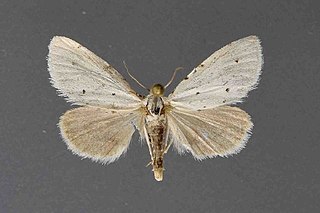
Grotellaforma is a monotypic moth genus of the family Noctuidae erected by William Barnes and Foster Hendrickson Benjamin in 1922. Its only species, Grotellaforma lactea, was first described by Stretch in 1885. It is found in North America, including California and Arizona, its type locations.

Grotella harveyi is a species of moth in the genus Grotella, of the family Noctuidae. This moth species is found in North America, including Colorado, its type location.

Grotella stretchi is a species of moth in the genus Grotella, of the family Noctuidae. This moth species was first described by William Barnes and Foster Hendrickson Benjamin in 1922. It is found in North America, including California, its type location.

Eudonia echo is a moth of the family Crambidae described by Harrison Gray Dyar Jr. in 1929. It is found in western North America from British Columbia to California.
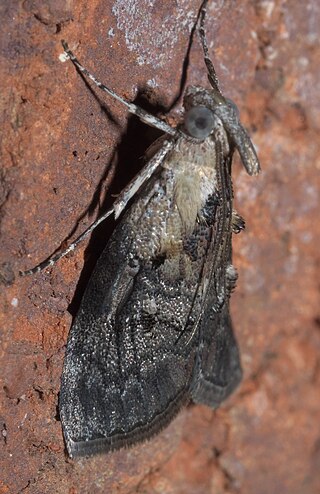
Pococera is a genus of snout moths in the subfamily Epipaschiinae, found mainly in North and Central America. It was described by Philipp Christoph Zeller in 1848.
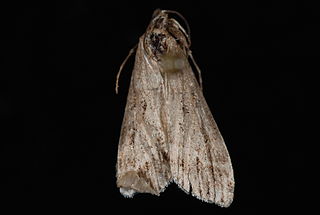
Eudonia commortalis is a moth in the family Crambidae. It was described by Harrison Gray Dyar Jr. in 1921. It is found in North America, where it has been recorded from Alaska to British Columbia, Washington and California.

Eudonia leucophthalma is a moth in the family Crambidae. It was described by Harrison Gray Dyar Jr. in 1929. It is found in North America, where it has been recorded from British Columbia and Alberta to Washington and California.
Eudonia rotundalis is a moth in the family Crambidae. It was described by Eugene G. Munroe in 1972. It is found in North America, where it has been recorded from Arizona, Colorado and New Mexico.
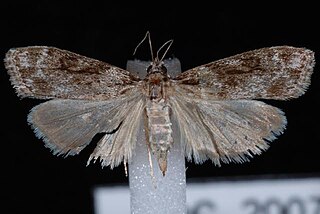
Eudonia spenceri is a moth in the family Crambidae. It was described by Eugene G. Munroe in 1972. It is found in North America, where it has been recorded from California and Arizona to Montana and British Columbia.

Eudonia spaldingalis is a moth in the family Crambidae. It was described by William Barnes and James Halliday McDunnough in 1912. It is found in North America, where it has been recorded from Alberta, Arizona, British Columbia, California, Colorado, Montana, Nevada, New Mexico, Utah and Wyoming.
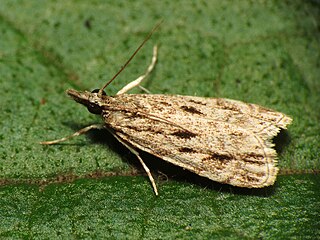
Eudonia strigalis, the striped eudonia moth, is a moth in the family Crambidae. It was described by Harrison Gray Dyar Jr. in 1906. It is found in North America, where it has been recorded from Nova Scotia to southern Ontario and south to Florida.
Eudonia torniplagalis is a moth in the family Crambidae. It was described by Harrison Gray Dyar Jr. in 1904. It is found in North America, where it has been recorded from South Dakota, the Rocky Mountains, the mountains of the south-western United States and from British Columbia to southern California.

Noctueliopsis aridalis is a moth in the family Crambidae. It was described by William Barnes and Foster Hendrickson Benjamin in 1922. It is found in North America, where it has been recorded from Arizona, California and Nevada. The habitat consists of deserts.
Apilocrocis pimalis, or the Pima apilocrocis moth, is a moth in the family Crambidae. It was first described by William Barnes and Foster Hendrickson Benjamin in 1926.
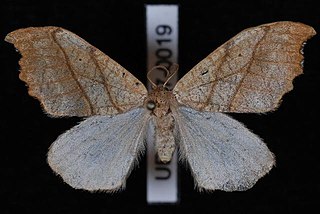
Falcaria bilineata, the two-lined hooktip moth, is a moth in the family Drepanidae. It was described by Packard in 1864. It is found in North America, where it has been recorded from Newfoundland to New Jersey, west to Oregon and north to British Columbia. The habitat consists of deciduous woodlands.
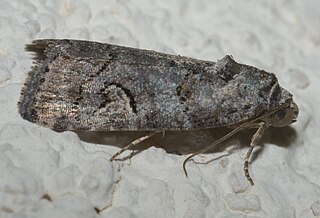
Triocnemidina is a subtribe of owlet moths in the family Noctuidae. There are about 16 genera and at least 30 described species in Triocnemidina.
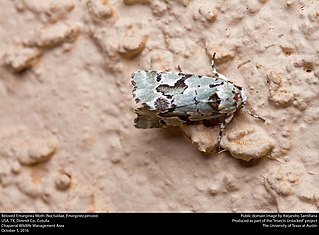
Psaphidini is a tribe of owlet moths in the family Noctuidae. There are at least 40 genera and at least 90 described species in Psaphidini.

Grotellinae is a subfamily of owlet moths in the family Noctuidae. There are about 5 genera and more than 20 described species in Grotellinae. They are found primarily in North and Central America, and are common in the southwestern United States.















